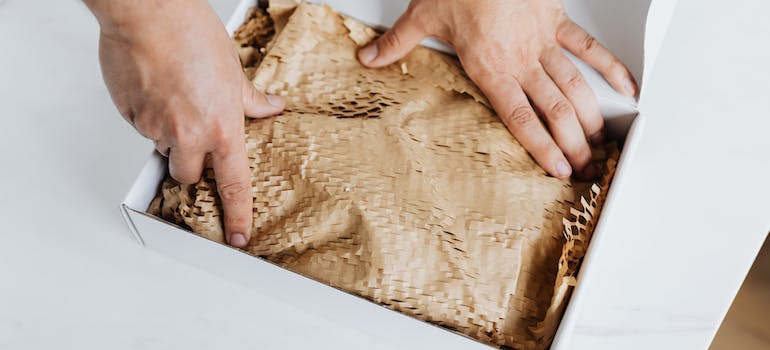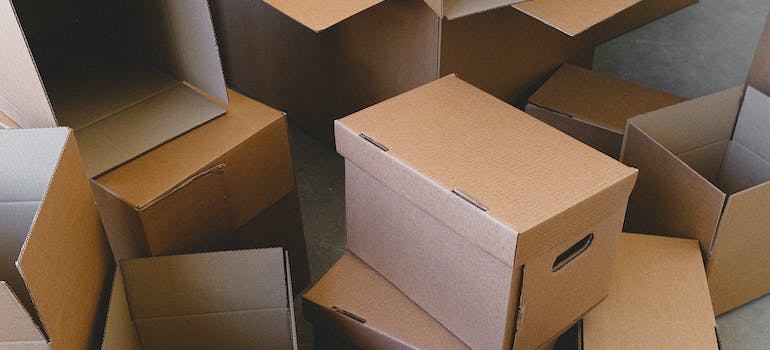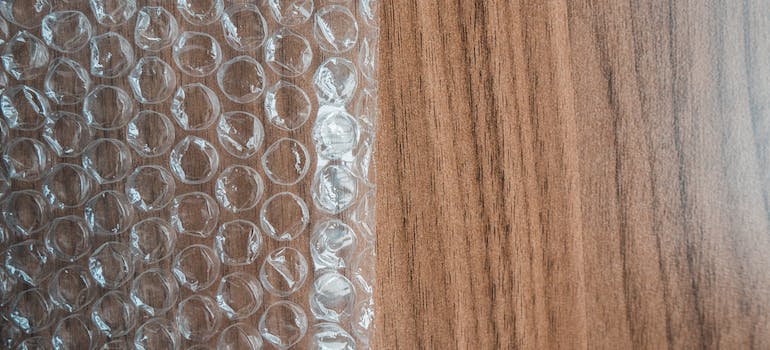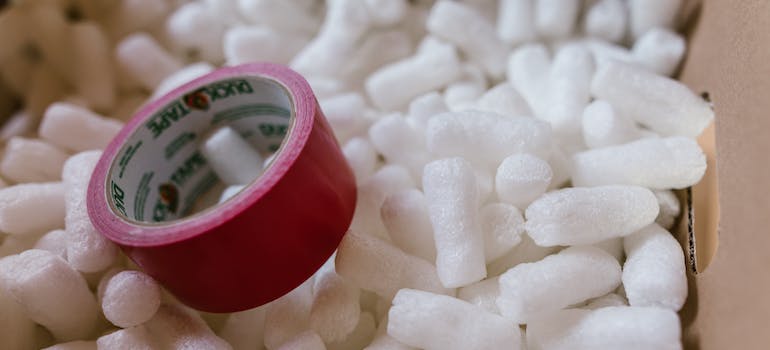Sustainable Packing Methods: Minimizing Waste, Protecting the Environment
Sustainable packing methods play a crucial role in reducing waste and safeguarding our environment. As awareness about environmental issues grows, more people are seeking ways to minimize their ecological footprint. This shift towards eco-friendly practices is especially important in the packing, moving, storage, and shipping industries, where traditional materials contribute significantly to pollution and waste. This article by our Boise moving and storage experts explores the importance of sustainable packing and various eco-friendly packing materials and offers practical strategies for clients and businesses to adopt these methods.
The Importance of Sustainable Packing
Sustainable packing goes beyond merely using recyclable materials. It encompasses a holistic approach that considers the entire lifecycle of packing materials. This approach aims to minimize environmental impact by reducing waste, using renewable resources, and ensuring that products are designed for reuse or recycling. Adopting sustainable packing methods can significantly reduce the amount of waste sent to landfills, decrease carbon emissions associated with the production and disposal of packing materials, and conserve natural resources.
Eco-Friendly Packing Materials
Several materials have emerged as eco-friendly alternatives to traditional packing supplies. Here are some of the most promising options:
- Biodegradable Packing Peanuts: Unlike traditional Styrofoam peanuts, biodegradable versions are made from natural, non-toxic sources such as wheat and corn starch. They decompose in water, leaving no toxic waste.
- Corrugated Bubble Wrap: Made from upcycled corrugated cardboard, this bubble wrap alternative is both recyclable and biodegradable. It provides excellent protection for items during shipping without harming the environment.
- Recycled Paper and Cardboard: Using recycled paper and cardboard for packing is a straightforward way to decrease the demand for virgin materials. These materials can be recycled several times, reducing the need for deforestation and lowering the carbon footprint associated with production.
- Plant-Based Plastics: Plastics made from plant materials, such as corn or sugarcane, offer a renewable alternative to petroleum-based plastics. These bioplastics are often compostable or biodegradable, breaking down without leaving harmful residues.
- Fabric Wraps: Reusable fabric wraps can replace disposable wrapping paper or plastic bags. Made from materials like cotton or hemp, these wraps can be used repeatedly, offering a sustainable and stylish packing solution.
These alternatives offer practical solutions to the challenges of waste and pollution and align with the growing consumer demand for eco-friendly products. As awareness and adoption of these sustainable packing options increase, they pave the way for a more environmentally responsible and resource-efficient future in packaging.

Biodegradable Packing Peanuts
Biodegradable packing peanuts represent a significant advancement in sustainable packaging. Unlike their Styrofoam counterparts, these eco-friendly alternatives are crafted from natural, non-toxic sources such as wheat and corn starch. This composition allows them to dissolve in water, effectively leaving no toxic waste behind. The environmental benefits of using biodegradable packing peanuts are manifold.
They offer a practical solution to the problem of packaging waste that clogs landfills and pollutes oceans. While breaking down naturally, they reduce the volume of waste and the potential for environmental harm. Moreover, their non-toxic nature ensures that they do not contribute to soil and water pollution, making them a safe choice for both the planet and its inhabitants.
The production process of biodegradable packing peanuts also highlights their sustainability. Made from renewable resources, they contribute to a circular economy where materials are reused and recycled, minimizing the need for virgin resources and reducing the carbon footprint associated with packaging production. For businesses in moving services Boise ID offers and clients alike, switching to biodegradable packing peanuts is a step towards more responsible consumption and waste management practices.
Corrugated Bubble Wrap
Corrugated bubble wrap offers an innovative and environmentally friendly alternative to traditional bubble wrap. Made from upcycled corrugated cardboard, this material is both recyclable and biodegradable, aligning with the principles of sustainable packaging. Its design provides excellent protection for items during shipping, absorbing shocks and preventing damage without the environmental impact of conventional plastic bubble wrap.
The use of corrugated bubble wrap supports waste reduction efforts by repurposing cardboard that might otherwise end up in landfills. It also reduces the dependence on virgin materials, further lowering the environmental footprint of packaging. For companies committed to sustainability, corrugated bubble wrap presents an opportunity to demonstrate their environmental responsibility while ensuring the safe transport of their products.
Recycled Paper and Cardboard
Utilizing recycled paper and cardboard in packaging is a straightforward yet effective strategy for environmental conservation. These materials can be recycled multiple times, contributing to a significant reduction in the demand for raw materials. This process not only helps in conserving forests but also reduces the carbon emissions associated with the production of new paper and cardboard.

Recycling paper and cardboard from moving boxes in Boise plays a crucial role in waste management. Simply by diverting these materials from landfills, we can decrease the volume of waste and mitigate the production of methane, a potent greenhouse gas. Furthermore, the recycling process consumes less energy compared to manufacturing new paper products, enhancing the overall sustainability of packaging solutions.
Plant-Based Plastics
Plant-based plastics are emerging as a renewable alternative to traditional petroleum-based plastics. Derived from plant materials such as corn or sugarcane, these bioplastics are designed to be compostable or biodegradable, breaking down naturally without leaving harmful residues. The adoption of plant-based plastics in packaging reflects a shift towards more sustainable practices, reducing reliance on fossil fuels and minimizing the environmental impact of plastic waste.
These bioplastics offer several environmental advantages, including lower carbon emissions during production and the potential to reduce plastic pollution. As they break down, bioplastics contribute less to landfill volume and pose a smaller threat to wildlife and marine ecosystems. However, the successful integration of plant-based plastics into sustainable packaging requires infrastructure for composting and recycling, highlighting the need for systemic changes to fully realize their environmental benefits.
Fabric Wraps
Fabric wraps present a reusable and stylish alternative to disposable wrapping paper or plastic bags. Made from natural materials like cotton or hemp, these wraps can be used repeatedly, embodying the principles of sustainability and waste reduction. Fabric wraps not only reduce the consumption of single-use packaging materials but also offer a versatile and aesthetically pleasing option for wrapping gifts or transporting items.
The sustainability of fabric wraps extends beyond their reusability. The production of these materials typically has a lower environmental impact compared to the manufacture of paper and plastic packaging. When choosing fabric wraps, people and businesses on the move can support sustainable practices in the textile industry and contribute to a reduction in packaging waste.
Strategies for Implementing Sustainable Packing
Adopting sustainable packing methods requires a thoughtful approach. Here are some strategies for individuals and businesses looking to make the switch:
- Evaluate Packing Needs: Assess the minimum amount of packing required to protect items during shipping. Overpacking not only wastes materials but also increases shipping costs.
- Choose Eco-Friendly Materials: Opt for packing materials that are recyclable, biodegradable, or made from renewable resources. Consider the lifecycle of these materials and their environmental impact.
- Educate Customers and Stakeholders: Inform customers and stakeholders about the benefits of sustainable packing and how they can participate in recycling or composting the materials.
- Innovate Packaging Design: Design packaging that minimizes waste, such as using modular designs that can be adjusted to fit different products or creating packaging that the customer can repurpose.
- Partner with Sustainable Suppliers: Work with suppliers who prioritize environmental sustainability in their products and practices. This can help ensure a consistent supply of eco-friendly packing materials.
- Implement a Take-Back Program: Encourage customers to return packaging for reuse or recycling. This not only reduces waste but also engages customers in sustainable practices.
Transitioning to sustainable packing methods is an essential step towards reducing environmental impact and promoting a more sustainable future. Choosing eco-friendly materials and implementing thoughtful packing strategies helps significantly reduce waste and protect our planet. As more people embrace these practices, the collective impact on the environment can be profound, leading to a cleaner, healthier world for future generations.

Evaluate Packing Needs
The first step towards sustainable packing is to assess the minimum amount of packing required to protect items during shipping. This evaluation helps in identifying opportunities to reduce material use without compromising the safety of the products. Overpacking is a common issue that not only wastes resources but also increases shipping costs and the carbon footprint associated with transportation. By optimizing packing, freight companies in Idaho can achieve efficiency, reduce waste, and lower operational costs.
Choose Eco-Friendly Materials
Selecting the right materials is crucial for sustainable packing. It’s important to opt for materials that are recyclable, biodegradable, or made from renewable resources. When choosing these materials, consider their lifecycle and overall environmental impact. For instance, materials that can be easily recycled or composted at the end of their use reduce landfill waste and support a circular economy. Making informed choices about packing materials demonstrates a commitment to sustainability and can influence the broader market towards eco-friendly options.
Educate Customers and Stakeholders
Education plays a vital role in the success of sustainable packing initiatives. Informing customers and stakeholders about the benefits of sustainable packing and how they can contribute to its effectiveness is essential. This can include instructions on how to recycle or compost the packing materials properly. Educating the public fosters a culture of sustainability and encourages responsible consumer behavior, which is key to reducing the environmental impact of packaging.
Innovate Packaging Design
Innovative packaging design is at the heart of sustainable packing. This involves creating packaging solutions that minimize waste, such as modular designs that can be adjusted to fit different products, thereby reducing the need for multiple packaging sizes. Additionally, designing packaging that can be repurposed by the customer for other uses extends the life of the packing materials and reduces waste. Innovation in design not only addresses environmental concerns but also can lead to cost savings and enhance the customer experience.
Implement a Take-Back Program
A take-back program encourages customers to return used packaging for reuse or recycling. This initiative not only helps in reducing waste but also engages customers directly in sustainable practices. Take-back programs can be an effective way to recover materials for recycling, extending their lifecycle and reducing the demand for raw resources. Such programs also demonstrate a company’s commitment to sustainability and can enhance brand loyalty among environmentally conscious consumers.

Partner with Sustainable Suppliers
Building relationships with suppliers who prioritize environmental sustainability is another important strategy. Partnering with suppliers committed to eco-friendly practices ensures a consistent supply of sustainable packing materials. This collaboration can also foster innovation and lead to the discovery of new, more sustainable materials and methods. Businesses can strengthen their sustainability efforts and contribute to a greener supply chain when choosing suppliers with shared values.
Embracing sustainable packing methods marks a significant step forward in our collective effort to protect the environment. This approach addresses the urgent need to reduce waste and conserve resources and aligns with the growing consumer demand for eco-friendly practices. Through careful evaluation of packing needs, selection of sustainable materials, customer education, innovative design, collaboration with green suppliers, and the implementation of take-back programs, businesses providing packing supplies in Boise and individuals can make a tangible difference.
The transition to sustainable packing offers a multitude of benefits, including reduced environmental impact, enhanced brand reputation, and potential cost savings. It demonstrates a commitment to environmental stewardship and positions those who adopt it as leaders in the movement toward a more sustainable future.
As we continue to advance in this direction, the collective impact of our efforts will become increasingly evident. The adoption of sustainable packing practices is not just a trend but a fundamental shift in how we view and manage our resources. It paves the way for a healthier planet and a more responsible, sustainable way of conducting business. The momentum towards sustainable packing is building, and now is the time to act. With each step we take, we move closer to a more sustainable world. So, let’s embrace this opportunity, knowing that our actions today will shape a better tomorrow for our planet.

Everyone from the packers to the movers were awesome! They were all very professional and showed up when they were supposed to. would definitely use them again.

